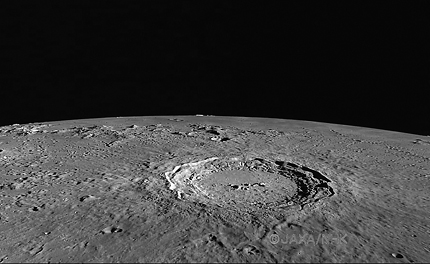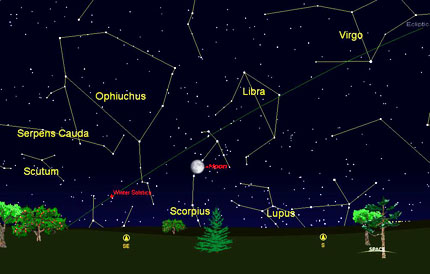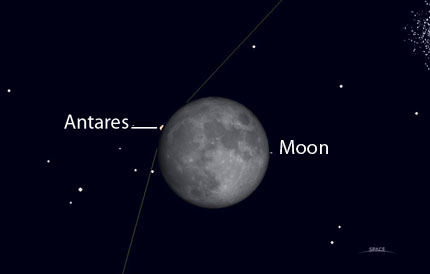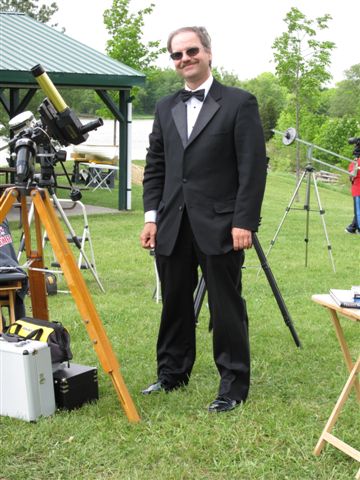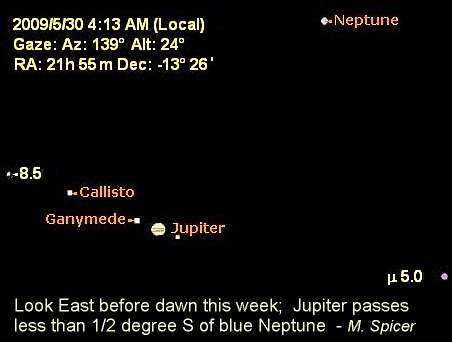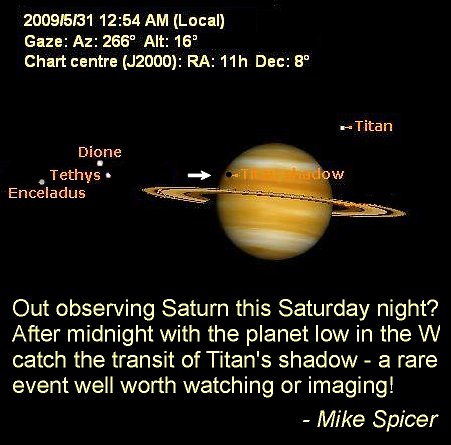To avoid any more of John G’s posts (just kidding) I’m going to put up a bit of a report from Cherry Springs where a number of your fellow HAA members have been braving the elements.
I would have posted something earlier but for some reason (operator incompetence???), I haven’t been able to connect to the internet here, even though everyone else could. After many hours of trying, I had given up. But now that everyone but Steve and I have left and we have some time, I borrowed his wireless card to try in my computer and we finally got it working (after disabling my built-in wireless). Strange that the only 2 places that I could not connect to a wireless access point has been here at Cherry Springs and at StarFest last year. Are the Wireless Astronomy gods conspiring against me?
As any of you who have been monitoring the conditions here know, it has been very wet. I arrived on Wed in hopes of an early start. But it rained most of the trip here and during set up. Even after set up, the rains and wind got worse. We had damage to Steve’s tent similar to what happened to Jim’s last Sept here. Fortunately mine survived.
Ann and Alex Tekatch, Matthew and Janice Mannering, Ed Smith, Steve Germann, Marg Walton and Bruce Peart arrived to join in on the fun and round out the HAA contingent. A few others who had indicated they might come, understandably changed their mind.
Wed and Thurs nights were complete wash outs with rain changing from light to heavy almost continuously through this entire time. Fri did improve and we had enough sun for some to get minor sunburns. I even got some solar observing in, but nothing of consequence to be seen. Fri night remained moderately clear to allow us to see Saturn, Vega, M57, Scorpius, M4, Scutum and various bits and pieces between the various clearings. The Milky Way was very nice – probably as good as it ever gets at Binbrook, but not the best we’ve seen here. It wasn’t the best night we’ve seen down here in the past, but at least we got a few hours of real observing in. (But little astro-photography – just too unsettled and variable.)
Light rains returned at about 3am and then it was wet most of Sat. Sat night did have a few breaks which allowed us to play Name That Constellation in the Least Number of Stars (one of our observing director’s favourite games). We also got a chance to celebrate Matthew’s birthday!
Since it was a star party, there were a number of interesting talks. Among them, we had a 3D tour of Mars (complete with the glasses), exploring extra-solar planets and how amateurs could and were contributing to the real science in their discoveries, updates on the Hubble, and interacting galaxies. They were all quite good and well received – plus as a bonus, it got us out of the rain. The big thing I really enjoy about these type of events is meeting people we’ve met before, making new friends and contacts, promoting the HAA and checking out the toys that vendors bring. (Honest I didn’t spend too much.)
Considering the weather, many from other clubs did not arrive, and some decided to leave early since the forecasts obviously were not improving. Attendance was down due to the weather, but those who stuck it out had a good time.
Steve and I are planning to stay at least one extra night (and being hardy Canadians) didn’t leave early. As of Sun afternoon, there are only about 7 or 8 others remaining to wait for the better conditions which are forecast for Sun and Mon.
Hopefully some more reports and photos will follow.
cheers,
Don

